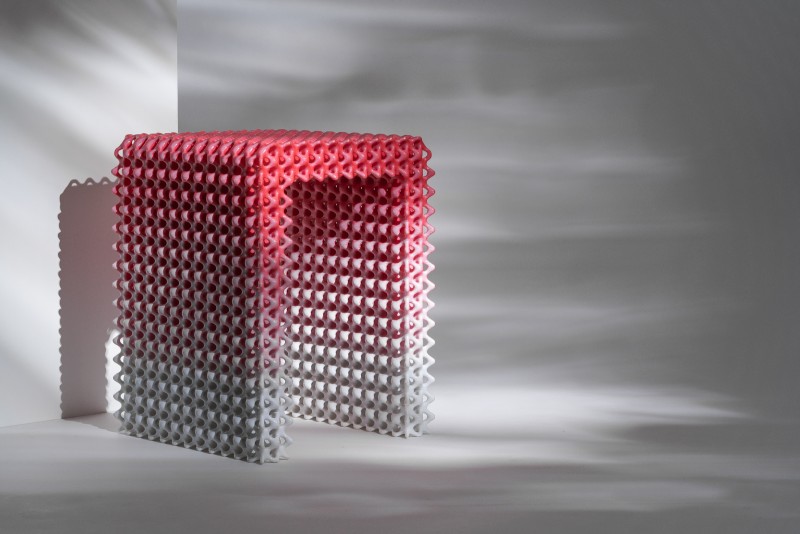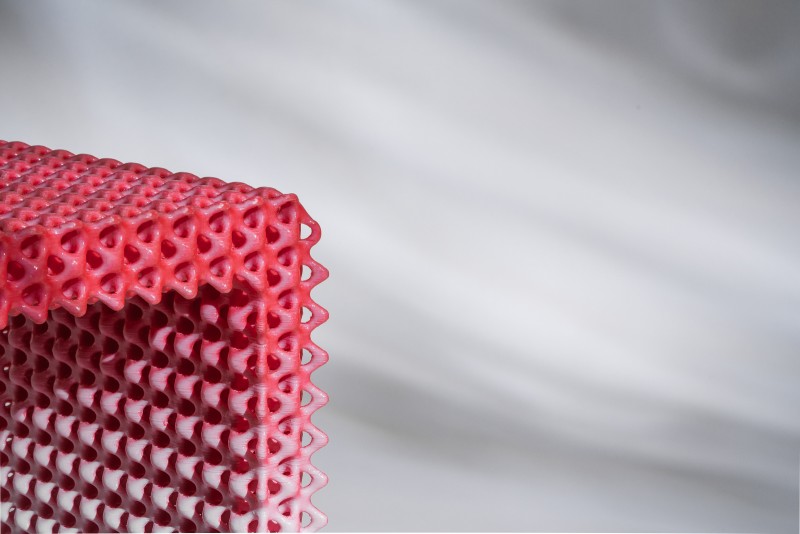Meta Ulm Stool
Tech Craft
The Meta Ulm Stool celebrates the visual and the functional language of parametric design in its simplest form: as a material, as a craft and as a culture.
With the application of additive manufacturing (AM) in an increasingly wide range of mass-manufactured products, a new culture of design has emerged. Today, AM in conjunction with advanced parametric design software, computer engines, and new data storage solutions are enabling the production of 3D printed foams – finely tuned 3D printed lattice structures. 3D printed foams are unique metamaterials that combine data processing with a base material to create customized mechanical responses. While metamaterials – materials that are engineered to have properties that are not found in naturally occurring materials – are increasingly being applied into industrial products, their use for their expressive materiality is still rare – partially because of the costs and the knowledge they involve.
The Meta Ulm Stool proposes a discussion about a new design practice around metamaterials. The Meta Ulm Stool takes functional latticing out of its context in material, weight and structural optimisation and applies it into a minimal seating solution while keeping the functional qualities of 3D printed latticing in its design. It applies the concept of lattice optimisation by offering a denser structure at the top of the stool – for better sitting comfort – and a lighter one on the bottom – to keep the stool lightweight. The gradual modulation of the strut sizes and the cell density throughout the volume is reflected visually through the partial dyeing of the chair, forming a colour gradient that highlights the shape gradient.
The minimal inverted U shape of the stool interpret 3D latticing as a metama- terial that the designer in collaboration with the software can craft into simple geometries. The collision between the intuitive and the minimal shape of the stool’s volume – inspired by Max Bill iconic “Ulm Hocker” – and the complex structure of the latticing work generated by the computer starts an interest- ing discussion between human and computer-generated design and new dig- ital materiality.
The Meta Ulm Stool is produced in Grasshopper with the volumetric modelling plug-in Dendro that is dedicated in part to the production of 3D printed cellular structures used, for instance, in architecture, biomedicine and aerospace.
3D print PLA (Polyactic Acid)
480 ✕ 360 ✕ 360mm (H ✕ W ✕ D)


